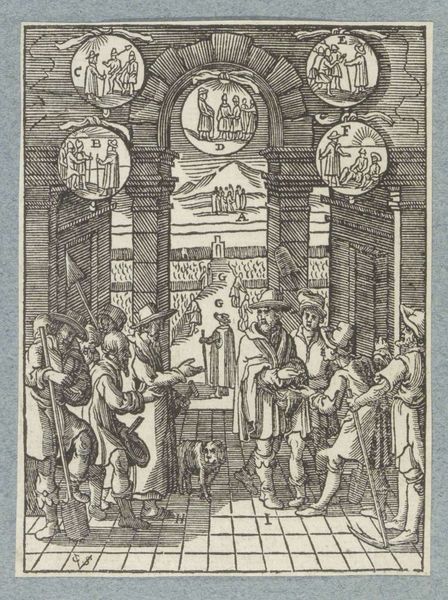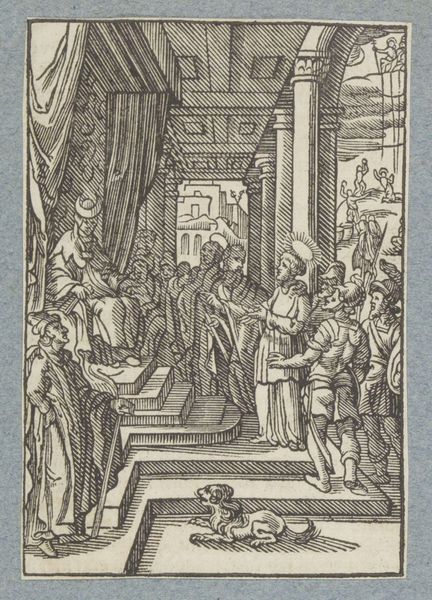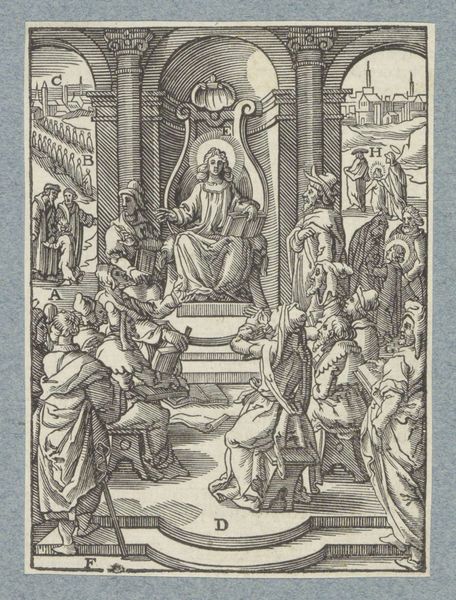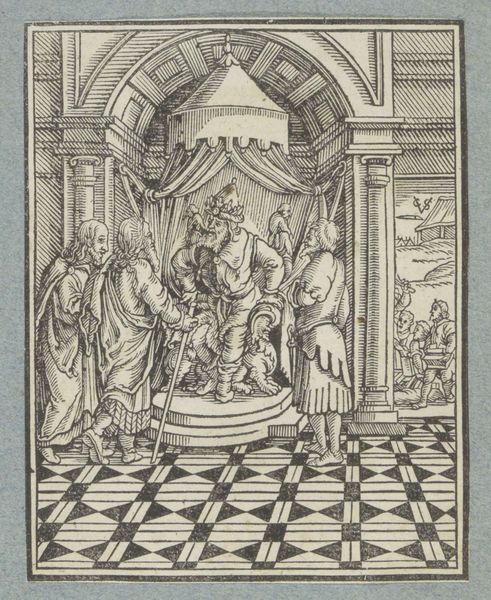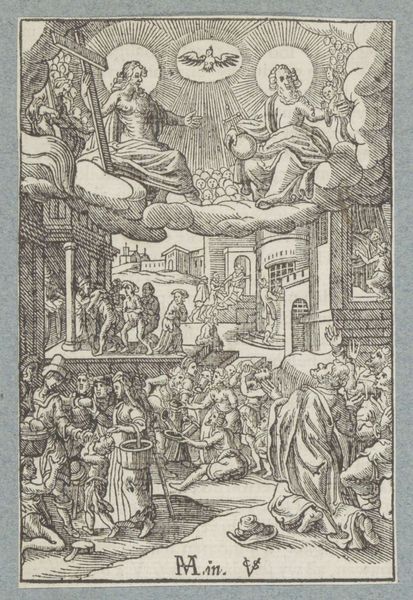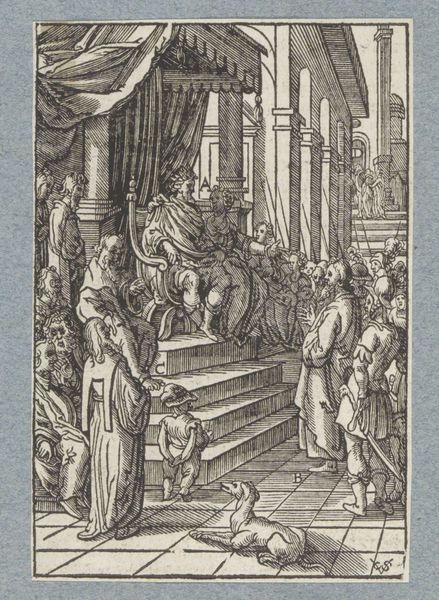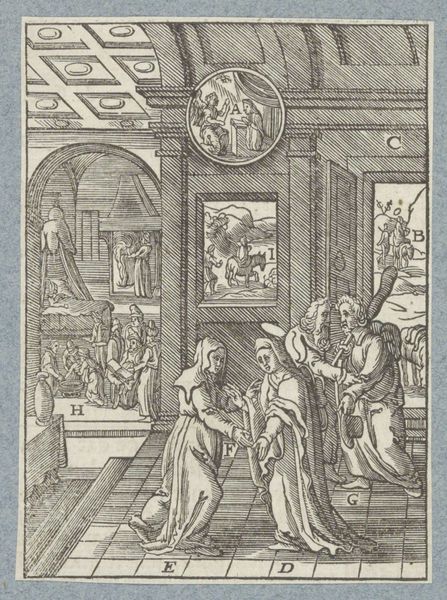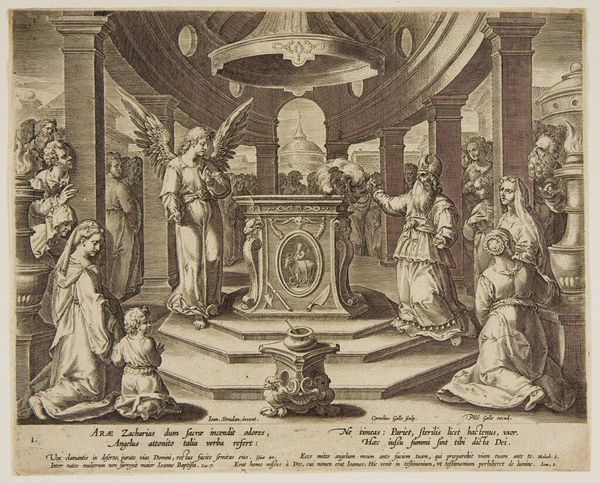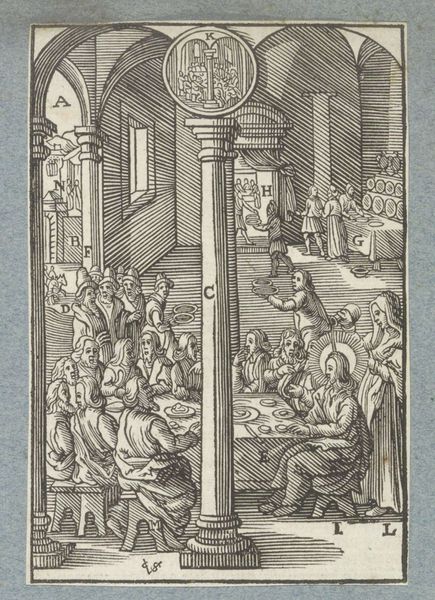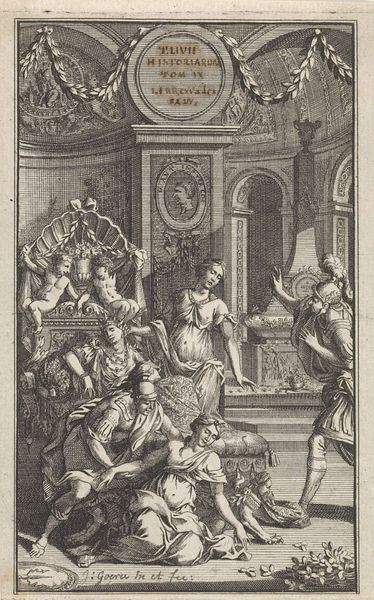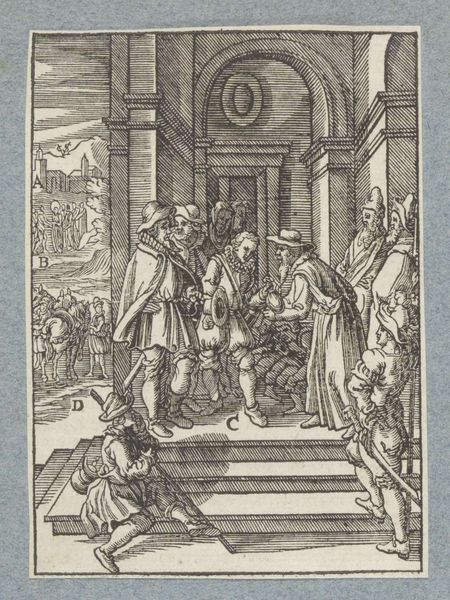
drawing, print, ink, engraving
#
drawing
#
medieval
# print
#
old engraving style
#
figuration
#
ink
#
pen-ink sketch
#
line
#
pen work
#
history-painting
#
northern-renaissance
#
engraving
Dimensions: height 104 mm, width 74 mm
Copyright: Rijks Museum: Open Domain
Curator: Welcome. Here we have a look at "The Circumcision of Christ" by Christoffel van Sichem II, an engraving dating back to 1629, now residing here at the Rijksmuseum. Editor: The density of line is pretty striking— almost claustrophobic. It's like the artist crammed as much detail as possible into every corner of the plate, it's kind of dizzying! Curator: Indeed. Sichem, working within the traditions of Northern Renaissance printmaking, demonstrates an incredible command over the engraving tool, doesn’t he? Think about the cultural significance of disseminating religious narratives via print at this time. It placed imagery directly into the hands of the populace. Editor: It's definitely not just about devotional purposes. I am intrigued by what these readily accessible prints reveal about the production practices, labor, and materials that underpinned religious messaging during the early modern period. We must not take the ease and spread for granted—metalwork, ink, paper—all of which made pieces like this, which in many respects, have a mass appeal. Curator: Precisely. Furthermore, consider the architectural setting, laden with symbolic motifs and allegorical letters. The figures are arranged with an almost stage-like formality. This work serves to emphasize not just a religious act, but also the structures of religious and social authority. Editor: I wonder about the access to such prints and images and, if available, who interpreted them. It's fascinating to view these as cultural objects tied to the lives and hands of those involved in the artistry of printing practices, distribution, and ultimately those who made their purchases to display them for various reasons, personal or collective. Curator: And beyond the religious narrative itself, the print functions as a powerful display of artistic skill and a mechanism for reinforcing social norms and power dynamics in 17th-century society. Editor: Looking at it from that angle, I appreciate even more the complex dance of the artist’s skill in crafting these pieces to reflect not only religious context, but all hands in accessing these materials. Thanks for the insights! Curator: A pleasure. Thank you for highlighting its crucial historical and social factors.
Comments
No comments
Be the first to comment and join the conversation on the ultimate creative platform.
